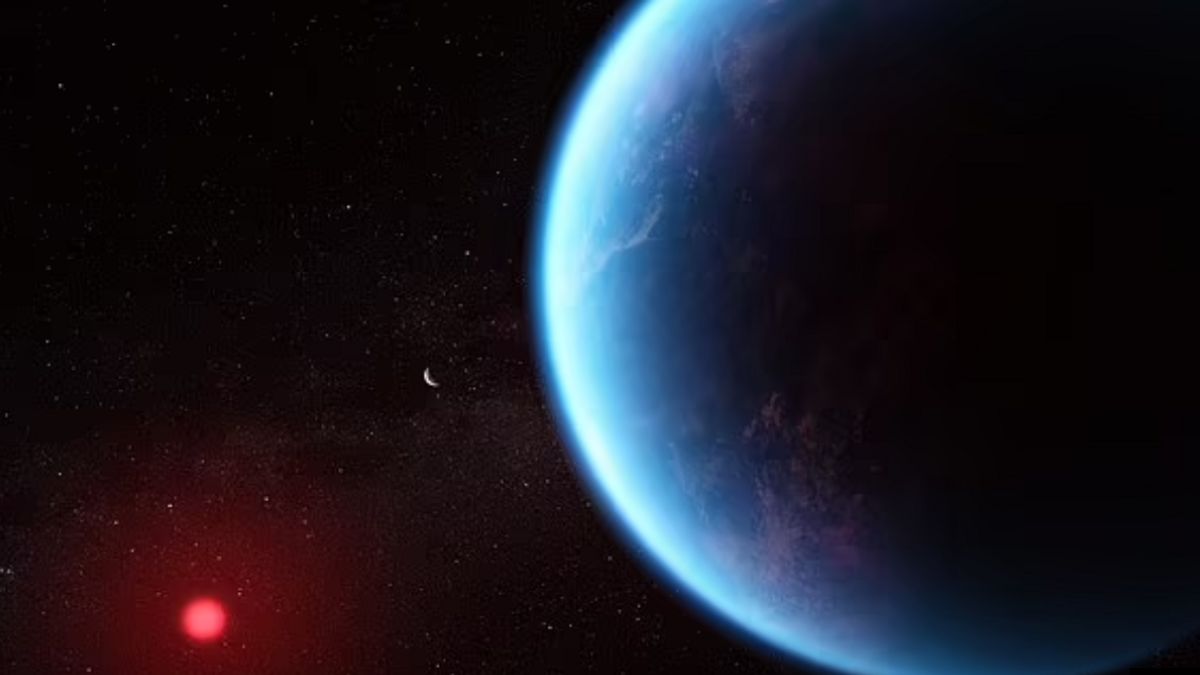JAKARTA - Astronomers can finally show that alien life does exist on a planet long after today's observations.
Planet K2-18b - which is more than double the size of Planet Earth and 120 light-years away - is located in a zone inhabited by its star at the constellation Leo.
Scientists said last year that they detected gas dimethyl sulfide in their atmosphere - a compound "only produced by life".
Now, to confirm the findings, the James Webb Space Telescope will conduct several hours of observations of the planet on Friday. However, this has not been confirmed because the telescope is experiencing disruption in its gyroscope.
Therefore, space enthusiasts will have to wait a few months for the results to be verified and published.
Scientists made an interesting and potentially revolutionary discovery in the search for alien life - after detecting signs of gas produced only by living things on the far water planet known as K2-18b.
A gas 'uniquely related to life' when it was discovered on Earth has been found in the atmosphere of K2-18b. The compound dimethyl sulfide is seen along with the amount of carbon dioxide and methane, "said the scientist.
Important Facts About Planet K2-18b
Found: 2015
Star: K2-18
orbit duration: 33 days
Constellation: Leo
Mass: 8.6 times the Earth's mass
Radius: 2.6 times the Earth's radius
Research on the planet K2-18b is led by Dr. Nikkuwasudhan, an astrophysicist at the University of Cambridge.
He called it a 'hycean' world - a relatively new term he created for rocky planets with a hydrogen-rich atmosphere and a water ocean.
If we detect DMS [in K2-18b], it actually makes it a top priority for signs of existence of life, "Obviously to the Times.
SEE ALSO:
K2-18b - more than eight times the Earth's mass and double its size - was discovered in 2015. But it was only in 2019 that the presence of water vapor in the K2-18b atmosphere was reported.
Then, last year, the James Webb telescope detected carbon dioxide and methane in its atmosphere, as well as ammonia deficiency.
Dr. Badminton called this a'very deep momentum' because it supports the theory that there is an ocean of water under a hydrogen-rich atmosphere.
Preliminary observations of Webb provide a possible detection of a so-called dimethyl sulfide (DMS) molecule, which on Earth is 'only produced by life'.
Dr. Badminton said his findings were surprising, but because this was just an initial observation, he could only say with 50 percent confidence that there was a DMS in K2-18b.
"That day, I didn't have the courage to tell my own team," he added.
Now after eight hours of observation by the James Webb telescope should provide a definitive answer - although the expert had to spend several months analyzing the data.
NASA's $10 billion observatory can analyze the chemical array of a distant planet by capturing light from its favorite star after passing through the planet's atmosphere towards Earth.
The English, Chinese, Japanese, Arabic, and French versions are automatically generated by the AI. So there may still be inaccuracies in translating, please always see Indonesian as our main language. (system supported by DigitalSiber.id)


















